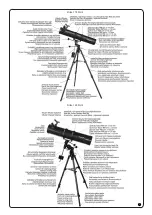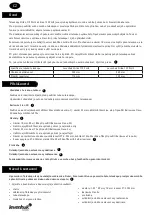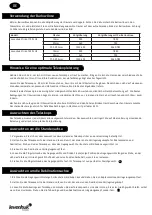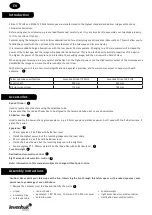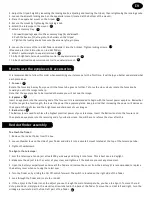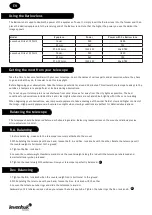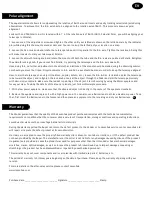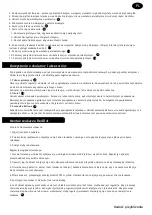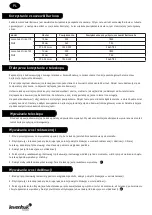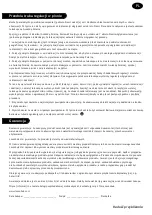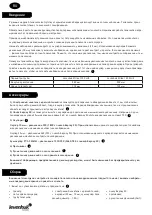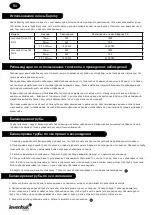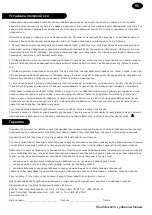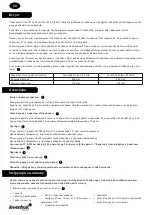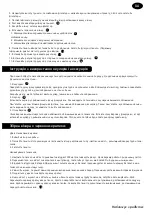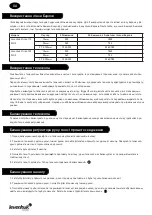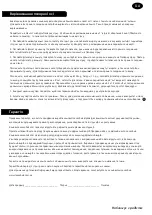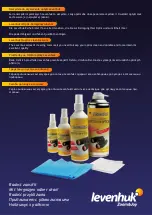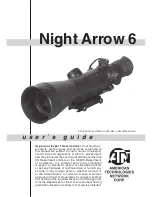
EN
Polar alignment
The equatorial mount allows for compensating the rotation of Earth around its axis and easily tracking celestial objects during
observations. To achieve this, the R.A. axis has to be aligned to the rotation axis of Earth. This process is known as polar
alignment.
Look north and ind Polaris. As it is located within 1° of the rotation axis of Earth (North Celestial Pole), you will be aligning your
telescope to this star.
1. Loosen one of the adjustment screws and tighten the other until your latitude is shown on the latitude scale by the indicator
pin (while doing this the mount ascend or descend. You can look up the latitude of your location on a map.
2. Loosen the Dec. lock knob and rotate the telescope tube until it is parallel to the R.A. axis. Tighten the lock knob. Doing this
will make it easier to aim your telescope at Polaris.
3. Loosen the azimuth locking knob and rotate the mount until both the tube and the R.A. axis are pointed at Polaris. Retighten
the azimuth locking knob. If you cannot ind Polaris, try pointing the telescope and the R.A. axis due north.
Upon doing this, no further adjustments in the azimuth and latitude of the mount should be made during the observing session,
nor should you move the tripod. Only movements in R.A. and Dec. axes should be made in order to keep the telescope aligned.
Now, to aim the telescope at an object (the Moon, Jupiter, Saturn, etc.) loosen the R.A. & Dec. lock knobs, point the telescope
tube toward the object, and retighten the lock knobs. Look at the object through the inder and aim the telescope precisely
with slow-motion controls. Make sure the red dot is pointing at the object. Start observing by using the 25mm eyepiece and
focus your view. To study the details of the Moon or planets, just follow this simple procedure.
1. With a low power eyepiece, make sure that the observed object is directly in the center of the eyepiece crosshairs.
2. Remove the eyepiece and replace it with a high power one. You can also use a Barlow lens to achieve maximum power. To do
that, irst insert the Barlow lens in the focuser and then place an eyepiece into the receiving end of your Barlow lens.
Warranty
The Vendor guarantees that the quality of the Levenhuk product purchased complies with the technical documentation
requirements on conditions that the consumer observes rules of transportation, storage conditions and operating instructions.
Levenhuk Ltd. warrants the product against defects in materials.
During the warranty period the Buyer can return the defect product to the Vendor or to Levenhuk service center. Levenhuk Ltd.
will repair or replace the defect product at its own discretion.
No claims are accepted in case the properly illed warranty slip is absent or contains corrections, or if the defect product has
not been provided by the Buyer. The manufacturer or the seller is not liable for any damages caused by misuse of the product.
No guarantee is provided in cases the product was used for purposes other than that intended or has mechanical damages,
scratches, cracks, optics damages, as well as in cases the product is broken-down due to impact damages, squeezing or
stretching or the product has been disassembled or repaired by unauthorized personnel.
This warranty does not cover components and/or accessories with limited use period, batteries, etc.
The period of warranty is 3 (three) years beginning on the date of purchase. Please keep the warranty slip along with your
receipt.
For more details on the after-sales service please contact Levenhuk.
www.levenhuk.com
Purchase date ___________________________ Signature __________________________ Stamp
23


